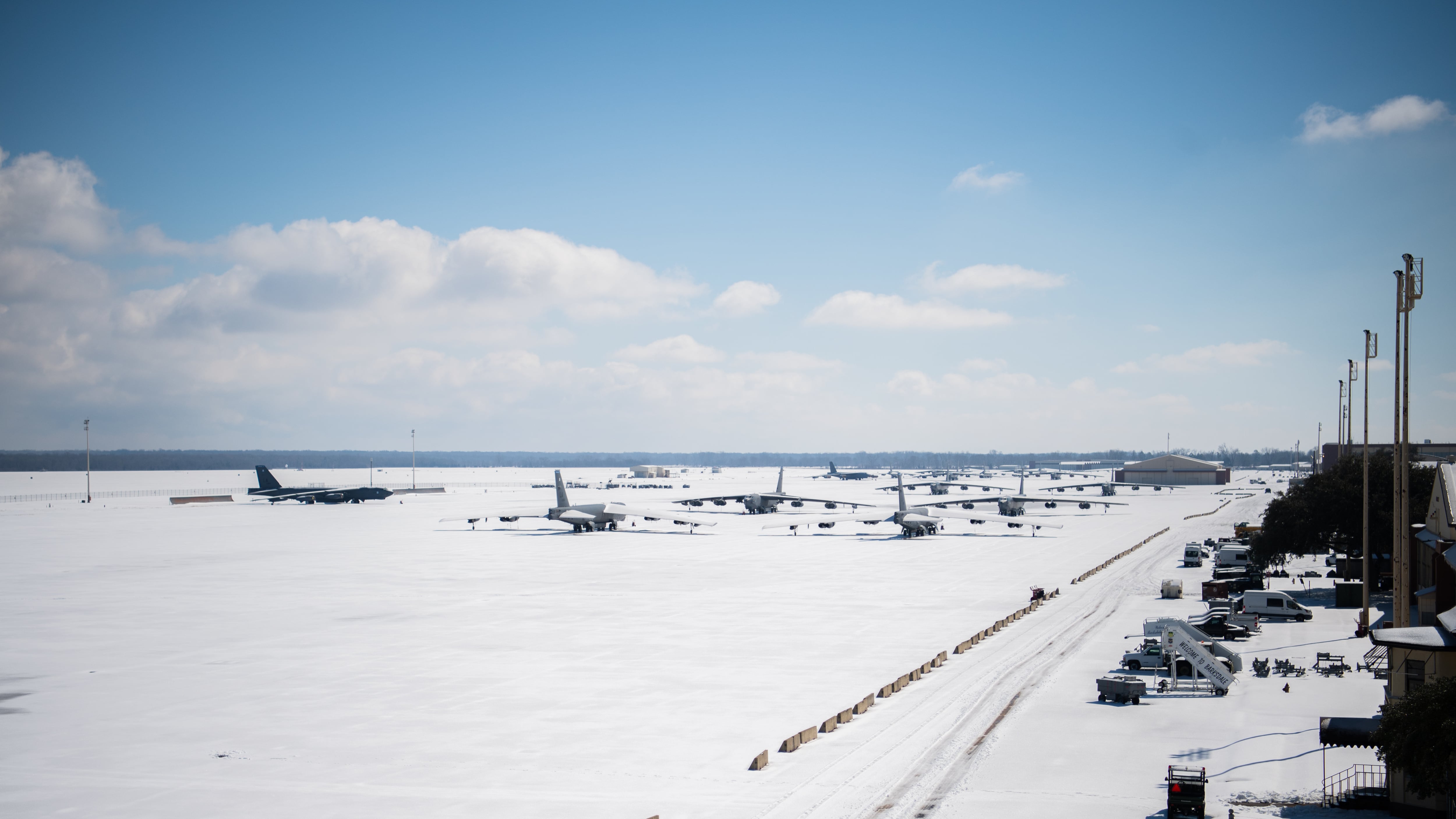Dozens of U.S. Air Force families stationed at Spangdahlem Air Base in Germany have been displaced from their homes after heavy flooding struck the area last week, a spokesperson for the 52nd Fighter Wing told Air Force Times.
Nearly three inches of water fell on western Germany and neighboring countries during a 12-hour span that began midday on July 14 and caused deadly floods around the area. All told, three months’ worth of rain fell in the space of three days, the U.S. military said.
At least 165 people were reported dead as of Monday evening, according to the German publication Deutsche Welle. The U.S. Army said another nearly 1,300 people were missing as of Monday.
About 30 families moved into temporary on-base housing after their homes were heavily damaged in the floods, 52nd Fighter Wing spokesperson Capt. Erin Recanzone said July 16. Others saw only minor leaks resulting from the deluge. Base officials are coordinating delivery of clothing, food and personal hygiene items for those in need.
RELATED

Eighty percent of the Spangdahlem population lives in the local community, and their rent payments may be reduced or paused while homes are partially or totally uninhabitable, the Air Force said. Families can use that money to pay for a hotel or rental apartment instead.
Landlords are responsible for repairing airmen’s homes, though tenants must pay to replace most damaged furniture, the service added. Either party can end a lease if renovating a home would be unreasonably expensive, such as structural restoration, or if the work will take too long to complete.
It’s still unclear how many of Spangdahlem’s 5,000 or so military and civilian employees are suffering from the effects of the natural disaster. All assigned to the base are safe, Recanzone said.
“It was a total disaster area. Just complete devastation,” said Christoph Himbert, a firefighter at U.S. Army Garrison Rheinland-Pfalz who responded to the city of Trier, about 20 miles south of Spangdahlem. “The streets had several feet of water flowing on them, cars had floated away and were buried in the mud, houses were damaged, and debris was everywhere.”

Spangdahlem itself, which flies F-16 Fighting Falcon jets in support of U.S. and NATO military objectives abroad, escaped widespread damage.
“The flooding on base was minimal, and the civil engineering team worked quickly and effectively to mitigate water discharge and attend to facilities that received minor water damage,” Recanzone said.
Water intrusion and damage occurred in about 20 facilities, largely in basements with “little to no mission impact,” they added.
Though the water on base is safe to drink, parts of the region are still under an indefinite boil-water advisory.
As storm recovery began over the past week, wing personnel delivered more than 1,800 filled and unfilled sandbags to their local neighbors and helped redirect water out of the area. Residents temporarily lost power as well as phone and internet service, and Spangdahlem asked personnel to conserve water for activities like washing dishes and clothes.
RELATED

“It’s hard to say at this time how long cleanup efforts will take,” Recanzone added. “The base is working tirelessly to provide support to airmen and their families who are in need.”
The Air Force is still recovering from the effects of other major natural disasters on its installations in the past few years, including a hurricane that struck Tyndall Air Force Base, Florida, in 2018 and flooding at Offutt Air Force Base, Nebraska, in 2019. Rebuilding from those events is expected to cost around $6 billion dollars over several years.
Rachel Cohen is the editor of Air Force Times. She joined the publication as its senior reporter in March 2021. Her work has appeared in the Washington Post, the Frederick News-Post (Md.), Air and Space Forces Magazine, Inside Defense, Inside Health Policy and elsewhere.




